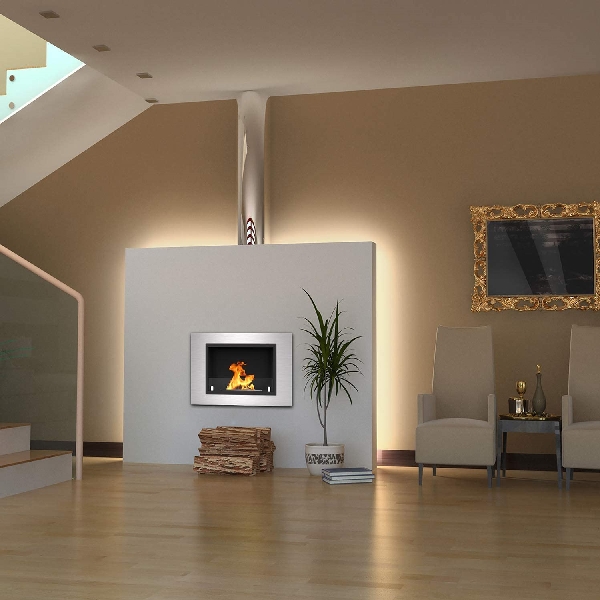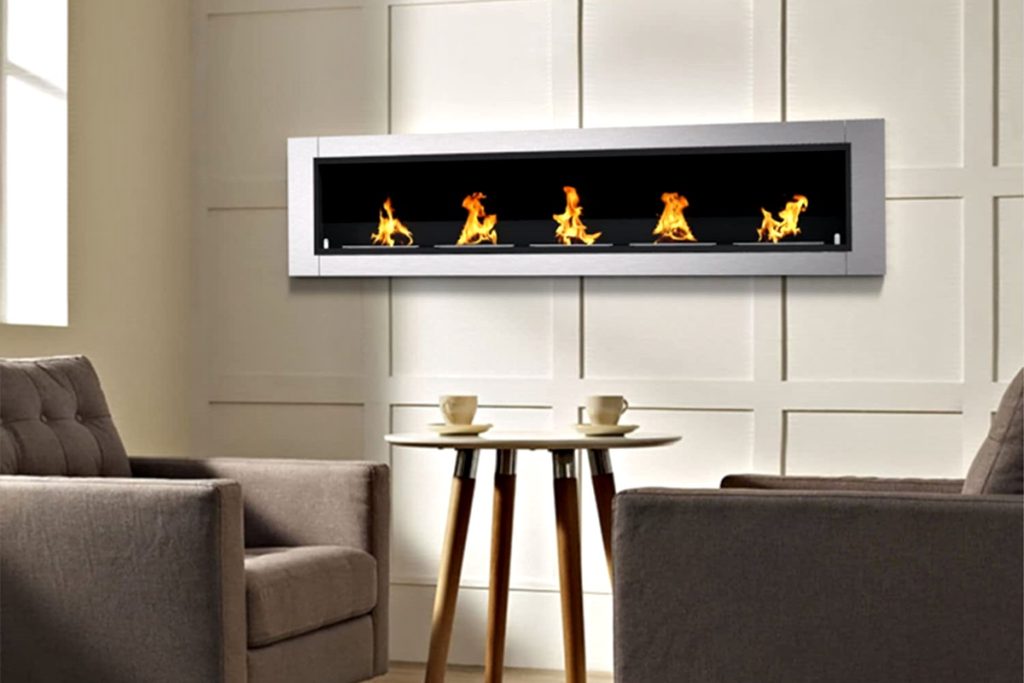Aesthetically, fireplaces are very appealing. They give your home a luxurious feel and serve as a natural gathering place. But can they actually heat your house? While electric fireplaces can’t completely replace a central heater, you can use them to generate heat and warm air in certain zones of your house and potentially lower your energy bill. Here’s what you need to know about using fireplaces as a source of heat in your home.
Can Fireplaces Replace My Heater?
It’s unlikely that you’ll be able to use your fireplace to completely replace your central heating system. This is because fireplaces heat the air around them, but they don’t circulate the heat produced around other rooms. However, putting a fireplace in your living space can help you cut back on the amount of energy you use from your heater.
Many people waste money to heat rooms of their house that they aren’t actually using. If everyone in your home is spending time in the living room where the fireplace is, you could turn the central heater off during this period of time and just use the fireplace. Doing this regularly can help you cut back on your heating bill. This may not always be an option in the freezing winter months, but it’s a great solution for transitional fall and spring months where the temperatures fluctuate and you may need a bit of extra heat.

What Types Of Fireplaces Produce The Most Heat?
A gas indoor fireplace is going to be the most effective for producing large amounts of heat. If you already have a wood stove in your home, it’s fairly easy to retrofit it with a gas-burning fireplace instead. These work similarly to natural gas heaters for homes – a professional will connect your fireplace to your gas line, and you’ll be able to adjust the fire using controls on the side of your fireplace.
In addition to generating much more heat output than traditional wood-burning fireplaces, gas fireplaces are also much easier to maintain. You don’t have to spend time stoking the fire or worry about putting it out when you’re done. There are two types of gas-burning fireplaces: vented or unvented. Unvented fireplace inserts are going to generate the most heat, because there’s no vent to release any of the excess heat. However, these fireplaces need to be monitored very carefully for carbon monoxide issues.
A vented gas fireplace is going to be much safer, and it will still generate a very large amount of heat by using gas logs, especially when the cold air is blowing through your home. This is because it runs very efficiently, and you have more control over the flame. They look like a traditional wood-burning fireplace, so you get a cozy, rustic look. In order to install a vented fireplace, you’ll need to have some kind of flue to let the excess heat and byproducts of combustion escape.
Ethanol fireplaces are a common alternative to traditional gas fireplaces. They can be installed anywhere and are also very energy efficient. Ethanol burns very clean and is good for the environment, which is why many people prefer this type of fireplace. However, ethanol fireplaces don’t generate very much heat, so they may not be the best option if that’s a priority for you.
While wood-burning fireplaces may look great and feel nostalgic, they aren’t the most efficient for heating your home. There are some things you can do to make them a bit warmer, but in general, they aren’t going to have much of an effect when it comes to heating your home.

How Can I Make My Fireplace Produce More Heat?
If you have a wood-burning fireplace, there are some strategies you can use to get more heat from it. The first is to add a fireback to your fireplace. These are metal reflectors that radiate the heat throughout the entire room. These are fairly easy to install and can make a big difference in the heat generated.
It’s also important to make sure you’re cleaning your chimney regularly. Buildup in the flue will prevent air from coming in and stoking the fire. If you don’t want to clean your chimney yourself, make sure you’re having someone come in and clean it for you at least once every year.
Finally, you’ll want to make sure you’re using the right type of wood. It’s very important that you’re using wood that is fully dry and seasoned, which will produce the most heat. Hardwood logs are also going to last longer than softwood, so they’ll produce heat more efficiently.
While a fireplace is no replacement for an energy-efficient heater, you can use it to complement the heating system you already have. Curling up around the fire feels very cozy and nostalgic, especially during the holiday season.

